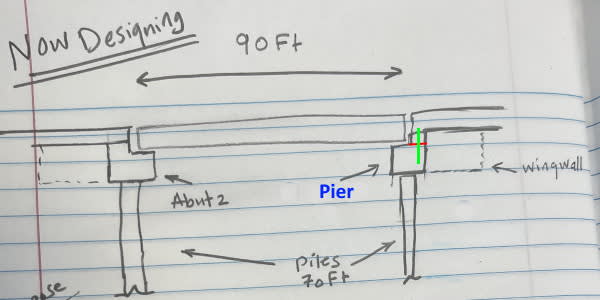Hello All:
I am designing a one span 90 ft bridge and width is 40 ft with prestressed concrete girders
But I should take in consideration while designing the abutment that this bridge will expand in the future to be 270 ft (3 spans, each one = 90ft)
Another two spans will be added in the future
I am designing the two abutment on piles for the 90 ft and we do not have piers right now
According to the future bridge Widening, I should take in consideration about the load coming to the abutment it will be doubled ant it may convent to a pier
My question is: in the future, How they will convert the abutment to be a pier and what is the type of the abutment that I should design?
if we have wing walls with the abutment, how the will demolish it in the future when they expand the bridge?
Any helpful resources as well??
picture is attached for clarification
Thank you
I am designing a one span 90 ft bridge and width is 40 ft with prestressed concrete girders
But I should take in consideration while designing the abutment that this bridge will expand in the future to be 270 ft (3 spans, each one = 90ft)
Another two spans will be added in the future
I am designing the two abutment on piles for the 90 ft and we do not have piers right now
According to the future bridge Widening, I should take in consideration about the load coming to the abutment it will be doubled ant it may convent to a pier
My question is: in the future, How they will convert the abutment to be a pier and what is the type of the abutment that I should design?
if we have wing walls with the abutment, how the will demolish it in the future when they expand the bridge?
Any helpful resources as well??
picture is attached for clarification
Thank you

